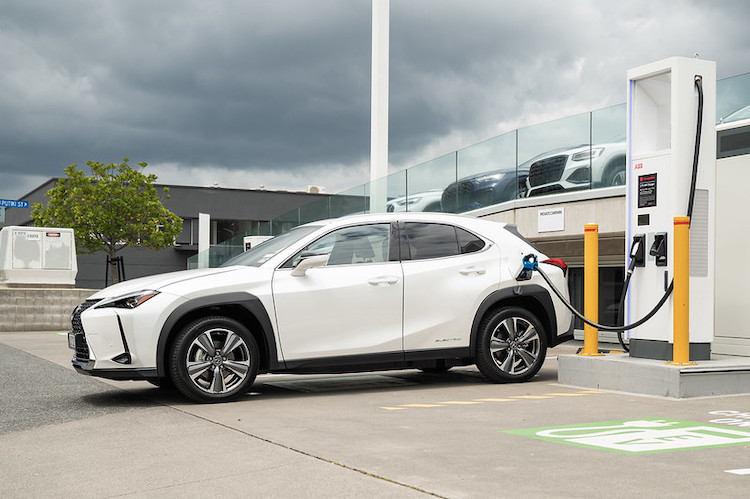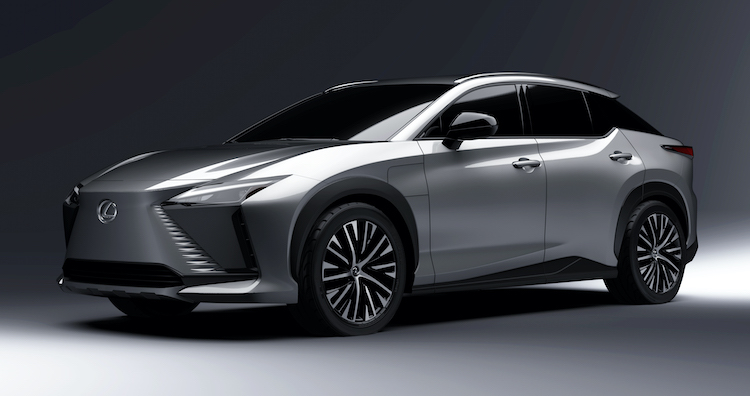
Lexus New Zealand says sales of its electrified products have increased by more than 20% in the last 12 months and the governments Clean Car Plan has accelerated further interest in both of its hybrid and plug-in electric vehicles.
Currently, the brand’s range sits at around 81% electrified, with a planned rise to 95% by 2025 – when the expectation is that 2000 Lexus models will be delivered a year.
It won’t just be hybrids doing the work, with the UX300e electric SUV already in the range, a plug-in hybrid drivetrain launched in the new NX SUV, and its first dedicated EV, the RZ450, on the way – the first of 13 Lexus electric vehicles announced by the brand’s president Akio Toyoda last year.
The Lexus RZ450 EV will be revealed in full internationally on April 20.

Lexus New Zealand sales and marketing manager Craig Burton says demand for its new models is running at a rapid rate, to the point where it has a massive order pipeline in spite of restricted supply.
“Order volume has exceeded delivery since February last year, which has resulted in an ever-growing order bank which now sits at more than 1000 vehicles,” Burton says
“The UX300e and the rest of our hybrid range have certainly received new interest,” he says.
While the brand suffers the same issue as other luxury marques, in that much of the range is above the $80,000 Clean Car limit, Burton suggests there is still a benefit – with key competitors to NX and RX attracting a few, while none of the Lexus hybrid variants do.
Four models do gain a rebate – the UX300e, UX250h, ES300h and IS300h.
Hybrid-only NX range
The confidence in electrified drivetrains has seen the brand only take the new NX’s hybrid and plug-in hybrid models, rationalising the range to just three variants from seven.
The range opens with the NX350h hybrid at $92,700, with the NX350h hybrid at $101,900 and the NX450h+ F Sport PHEV at $107,900.
Compared to the previous generation NX, the overall length has increased by 20 mm, the wheelbase by 30 mm, the width by 20mm and the height by 15-25 mm.

The new NX is the first model to feature Lexus’ Tazuna concept for the driver’s cockpit, an approach that was first revealed in the Lexus LF-30 Electrified concept car. Key design features include a new-generation steering wheel for the brand, a huge 14-inch touchscreen and a corresponding reduction in buttons from 78 to 45, a new ‘Hey Lexus’ voice control system and electronic door handles that remove the risk of doors being opened into other traffic, cyclists or pedestrians.
Additionally, the Lexus Safety System+ has been expanded. New features include Intersection Turn Assist in the Pre-Collision System, and Lane Trace Assist in the Dynamic Radar Cruise Control.
The drivetrain range opens with the NX350h, which is front-wheel drive and utilises a new generation 2.5-litre hybrid petrol motor paired to a CVT transmission. The hybrid system uses a 1.1kWh battery and rates under WLTP at 5.5-litres of premium fuel per 100km. The hybrid system has a combined output of 179kW.
The Limited gains all-wheel-drive through an additional rear motor but has the same system output and fuel economy figure.
So far, 40% of orders have been for the range-topping NX450h+ F Sport, the brand’s first PHEV. It uses two electric motors and the same petrol motor to produce an output of 227kW against a WLTP consumption figure of 1.4-litres per 100km. Lexus claims a range of up to 87km on the 18.1kWh battery. Charging is single-phase up to 6.6kW.








